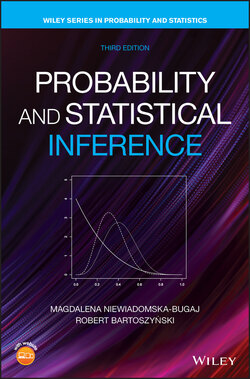Читать книгу Probability and Statistical Inference - Robert Bartoszynski - Страница 22
Example 1.7
ОглавлениеIn Example 1.1 an event such as “the sum equals 7” containing six outcomes and is a subset of the sample space . In Example 1.3, the same event consists of one outcome, 7.
When an experiment is performed, we observe its outcome. In the interpretation developed in this chapter, this means that we observe a point chosen randomly from the sample space. If this point belongs to the subset representing the event , we say that the event A has occurred.
We will let events be denoted either by letters , possibly with identifiers, such as or by more descriptive means, such as and , where and are some numerical attributes of the sample points (formally: random variables, to be discussed in Chapter 5). Events can also be described through verbal phrases, such as “two heads in a row occur before the third tail” in the experiment of repeated tosses of a coin.
In all cases considered thus far, we assumed that an outcome (a point in the sample space) can be observed. To put it more precisely, all sample spaces considered so far were constructed in such a way that their points were observable. Thus, for any event , we were always able to tell whether it occurred or not.
The following examples show experiments and corresponding sample spaces with sample points that are only partially observable:
